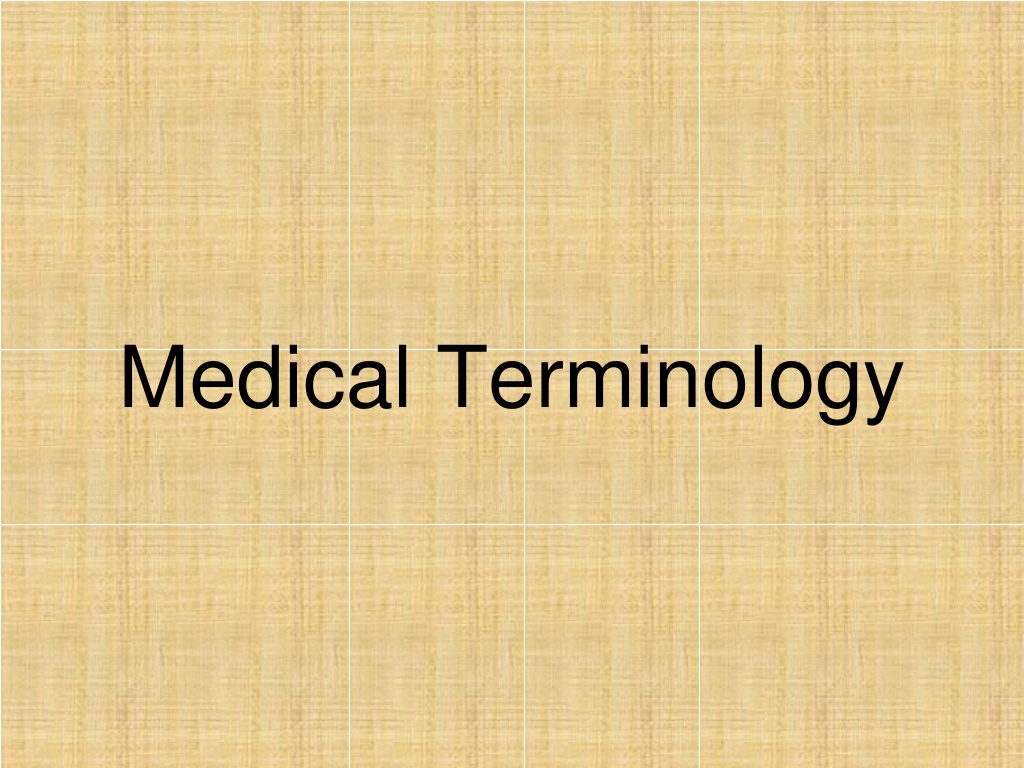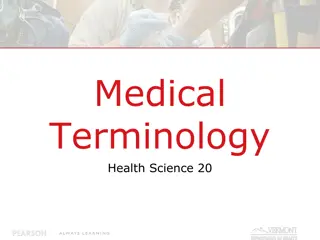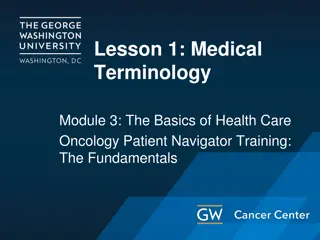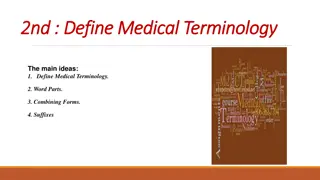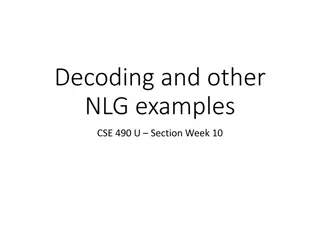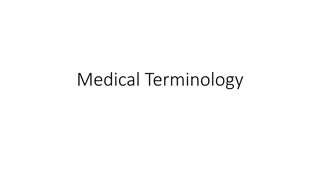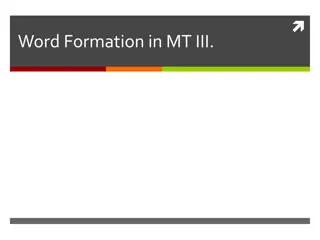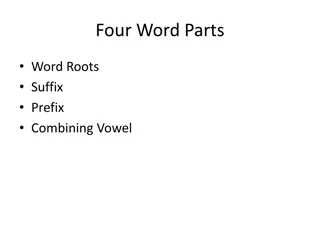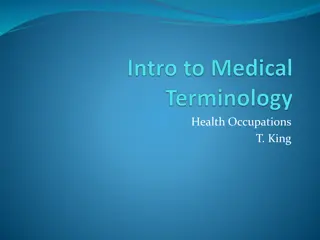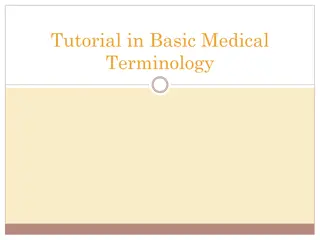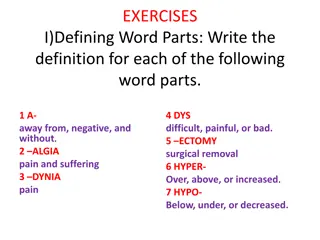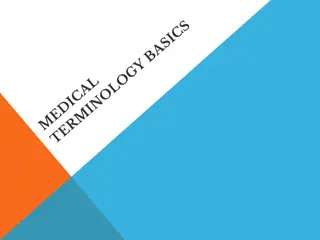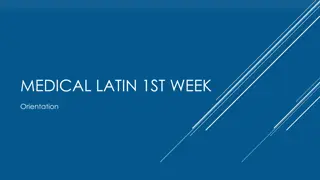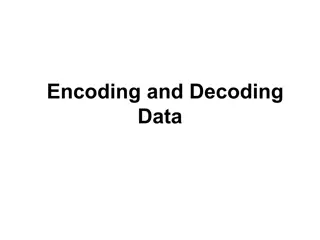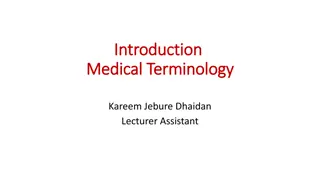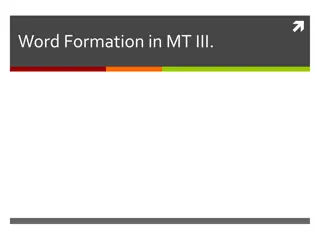Understanding Medical Terminology: Word Parts and Decoding
Essential knowledge of medical terminology involves understanding prefixes, suffixes, and root words. By dissecting word parts, health professionals can decipher complex terms and accurately interpret medical language. This guide highlights the role of root words, prefixes, suffixes, combining vowels, and decoding methods in forming medical terms, helping to demystify the language used in the healthcare field.
Download Presentation

Please find below an Image/Link to download the presentation.
The content on the website is provided AS IS for your information and personal use only. It may not be sold, licensed, or shared on other websites without obtaining consent from the author. Download presentation by click this link. If you encounter any issues during the download, it is possible that the publisher has removed the file from their server.
E N D
Presentation Transcript
It is nearly impossible for even the most experienced health professional to be familiar with every medical term. However, knowledge of prefixes, suffixes, and root words is essential. It is vital that every health professional be familiar with the commonly used medical terminology.
Word Parts / Building Blocks Most medical terms are formed by a combination of basic word parts. An understanding of how these parts work together makes interpreting medical language easier.
Root Words usually indicate the part of the body involved All medical terms must have one or more root words
Prefixes usually indicate location, time, or number - come at the beginning of the word Not all medical terms have prefixes
Suffixes usually indicate the procedure, disease, or condition - come after the root word The suffix, when connected to the root word will create a noun, adjective, or verb. All medical terms have a suffix.
Combining Vowel or Combining Form usually "O" attached to root word used to make medical terms easier to pronounce is NOT used when suffix begins with a vowel IS used when suffix begins with a consonant
Decoding Medical Terms Start with the suffix and define the suffix. Go to the prefix and define the prefix. Then, go to the middle of the word; define the word root, combining form, or both if both exist in the same word. Combine the definitions to decode the complete medical term or phrase.
Putting it together! Prefix + Root Word + Suffix = Medical Term POLY + NEUR + ITIS = POLYNEURITIS Many + Nerves + Inflammation = Inflammation of many nerves
Common Medical Prefixes a - absence of; without Ab- away from Ad- toward, in the direction of Dys- difficult, painful Hyper- over, above, increased Hypo- below, under, decreased Inter- between, among
Common Medical Prefixes (cont.) Intra- within, inside Peri - surrounding, around Poly- many Sub- under, less, below Super- above, excessive, beyond Supra- above, excessive, beyond mal - bad
Common Medical Suffixes itis inflammation malacia softening megaly - enlargement ology - the study of ologist specialist osis - disease, abnormal condition pathy disease ac, al, ic pertaining to
Common Medical Root Words Cardi/o heart Col/o - colon
Cost/o ribs Enter/o - intestines
Gastr/o stomach Hem/o blood My/o muscle
neur/o nerve oto ear or/o - mouth
Rhin/o nose Hepat - liver
Arthr/o joint Cephal/o head Crani/o - skull
Derm/o, dermat/o, cutane skin Nephr/o, ren/o kidney Oste/o - bone
Cyst/o urinary bladder Splen/o - spleen
Common Medical Abbreviations c with s without a before p after prn as needed NPO nothing by mouth
Common Medical Abbreviations stat immediately IV intravenous (through a vein) q.d. every day q.i.d four times a day Rx prescription Tx - treatment
Common Medical Abbreviations Male female
Communication Connection A medication is to be taken once every day (q.d.), but a health care provider mistakenly writes q.i.d. on the prescription. What will be the result of writing the incorrect abbreviation?
